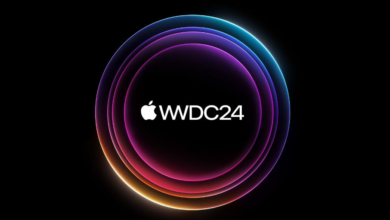Sleeping With Robots: How Artificial Intelligence Transformed My Sleep
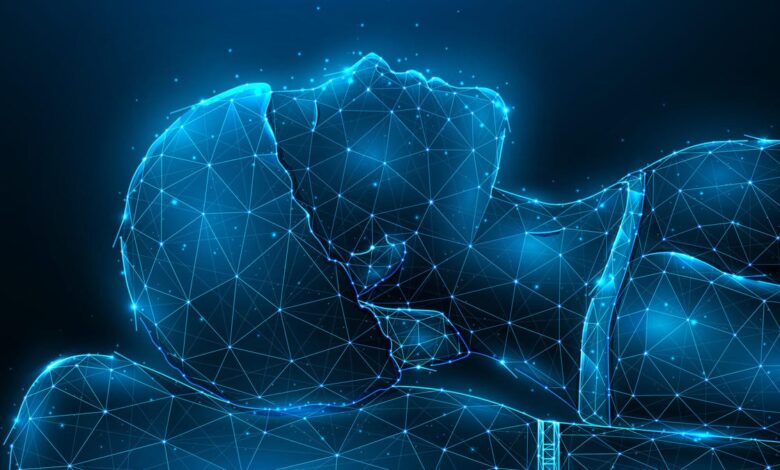
If you’re like me, you’ve tried all the “hacks” to get better sleep: meditation, freezing pillowcases or using a white noise machine. Poor sleep affects us all at some point, whether it’s caused by anxiety, an underlying health condition, dependence on our electronic devices or even the quality of our mattress. The consequences of sleep deprivation extend far beyond making us feel tired and moody the next day.
“We are familiar with the short-term consequences we feel each day, such as increased fatigue, poor mood and effects on performance,” said Dr. Sujay Kansagra, a sleep specialist and professor of pediatrics at Duke University School of Medicine. “But an increasing body of research shows long-term effects on cardiovascular health, immune function, risk of mood disorders, metabolism and even risk of stroke, just to name a few.”
At CNET, we’ve been studying sleep and testing sleep gadgets and devices for years. As AI technology continues to develop and advance, I was curious to discover how it can be leveraged to help improve sleep quality, so I went on a week-long journey into the realm of artificial intelligence to see if it could alter my sleep patterns. Here’s what I found.
Tracking my sleep performance with an AI-powered wearable
For this experiment, I started by using Whoop, an AI-powered fitness and health wearable, to track my sleep performance for a week. Similar to other fitness trackers, you wear it on your wrist and it monitors and analyzes all four sleep stages:
- Awake: The time before falling asleep and brief awakenings during sleep.
- Light sleep: Stage 2 of sleep, when you’re susceptible to being easily awakened by external factors.
- Deep sleep: Stage 3 of sleep, when your brain waves are the slowest and your body does most of the recovering.
- Rapid-eye movement sleep: REM sleep is when your brain activity is similar to being awake, but your muscles don’t move. This is when your brain recovers and processes new information.
Restorative sleep is a combination of deep and REM sleep, so I was particularly interested in monitoring those two stages since they’re critical for physical recovery and cognitive function.
Whoop told me to practice mindful breathing to destress.
What I liked about this wearable is that the automated sleep coach customized the suggestions based on my needs and lifestyle. For example, my wearable calculated my baseline (how much sleep I need based on my recent sleep activity), gave me insight into my sleep debt and made suggestions to optimize my sleep hygiene. The tracker also prompted me with daily recommendations to improve my sleep like breathing exercises to reduce stress and going to bed earlier.
I wore my Whoop for a week to get an accurate measure of my sleep before I moved on to the next stage of my experiment, which would involve using ChatGPT for recommended sleep routines. I kept it on during the entire day and throughout my regular activities. The Whoop wearable has a portable clip-on charger so you never have to take it off.
Based on the data from my Whoop, my sleep performance score was pretty decent: I scored an average of 91%.
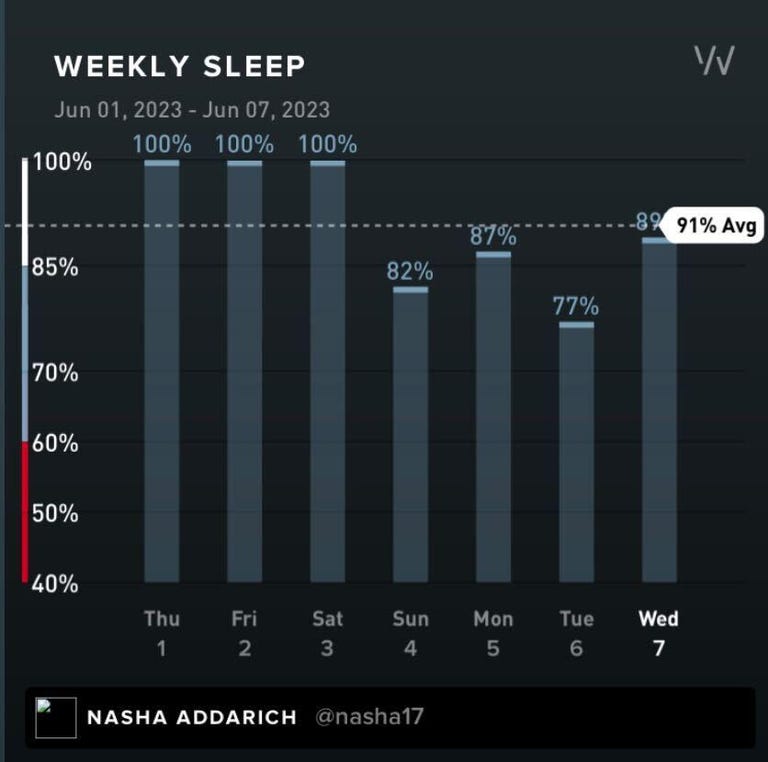
Overview of my Whoop sleep performance dashboard before experimenting with artificial intelligence to create a bedtime routine.
What sleep experts think about using AI for improving sleep
Wearable sleep trackers use a combination of indicators to measure your sleep performance, including heart rate, blood oxygen and motion sensors. Sleep quality can be hard to quantify, and this kind of technology can’t be relied on to determine a sleep disorder, according to Kansagara. “The software for determining deep versus light sleep in wearables is mostly black-box technology, so we don’t know what they are actually measuring,” she said.
That’s why sleep experts recommend seeking the help of specialized professionals to accurately diagnose and treat health conditions, such as sleep apnea or insomnia, through supervised sleep studies. Although sleep tracking will never be an actual cure for poor sleep, it can provide useful data on your overall sleep hygiene and give you insights on how to improve sleep quality.
It’s also important to note that sleep scores on wearables mostly rely on averages, and many factors affect the quality of sleep day to day, such as stress levels, location familiarity, exercise routine, diet and alcohol consumption. For example, I tend to sleep poorly when I’ve had a particularly stressful day or have too many tasks to accomplish.
Following a weekly sleep routine created by ChatGPT
To test automated technology, I used ChatGPT to create an ideal bedtime routine, which I followed for an entire week while using Whoop. I could then compare those measurable sleep results with the “normal” ones from the week prior without the robot.
Since I don’t have any underlying conditions that impact my sleep or an extremely strenuous daily routine, I started with a generic prompt: “Create a week-long bedtime routine to combat poor sleep.”
I tried playing around with different prompts, giving it specifics like having severe anxiety and insomnia, but the results came back the same. This could be because ChatGPT produces responses based on the data it’s been designed to pull from published internet content, meaning it’s not customizable. Regardless of the reason behind poor sleep, you’re likely to get common or generalized suggestions that you’d find from other sources.
Here’s the breakdown of my bedtime routine for an entire week following ChatGPT’s daily recommendations. Each routine came with a few specific instructions.
Day 1: Establish a relaxing evening environment
- Set a consistent bedtime that allows for 7 to 9 hours of sleep.
- Dim the lights in your bedroom to create a calm atmosphere.
- Turn off electronic devices at least 30 minutes before bed.
- Engage in calming activities like reading a book or taking a warm bath.
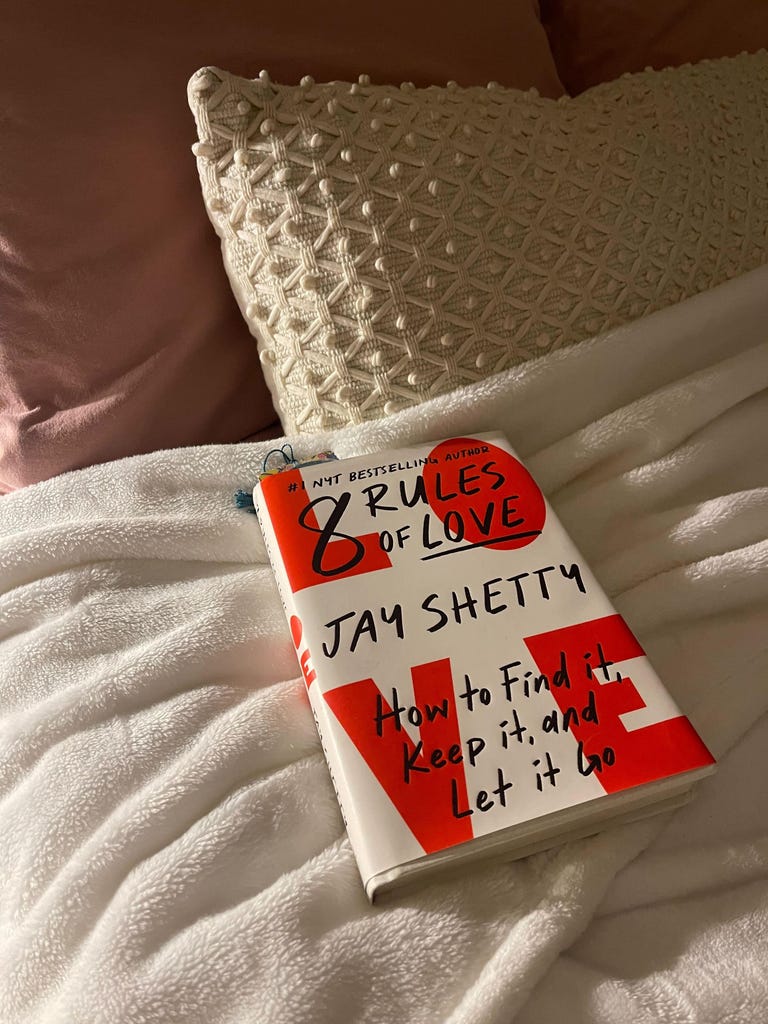
My goal was to wake up at 6:30 a.m. every day, so I aimed to be in bed by 9 p.m., read for 30 minutes and call it a night. I turned off all electronic devices while I read, leaving my phone out of the bedroom to avoid distraction and dimming the lights.
I didn’t even get to read for 20 minutes before my eyes started to close and I got sleepy. Reading before dozing off is a game changer for sleep latency (the amount of time it takes you to fall asleep).
According to The Sleep Doctor team, engaging in a relaxing activity like reading can help signal to your brain that your body is relaxed and ready to sleep. I usually spend 40 minutes scrolling through TikTok before I start getting sleepy. Studies show that excessive screen time before bed can severely disrupt our melatonin production, making it more difficult to “turn off” our brains and fall asleep. Reading cut my sleep latency by half on the first night.
The next morning
I got a total of 8 hours and 17 minutes of sleep. I even woke up before my alarm went off (which is rare) and felt energetic. The most significant change was in my sleep data: I spent more time in restorative sleep, the rest my body needs to replenish. For example, during my prior routine the night before, my total time spent in REM and deep sleep was 36%. After following this sleep routine, that number jumped to 41%.
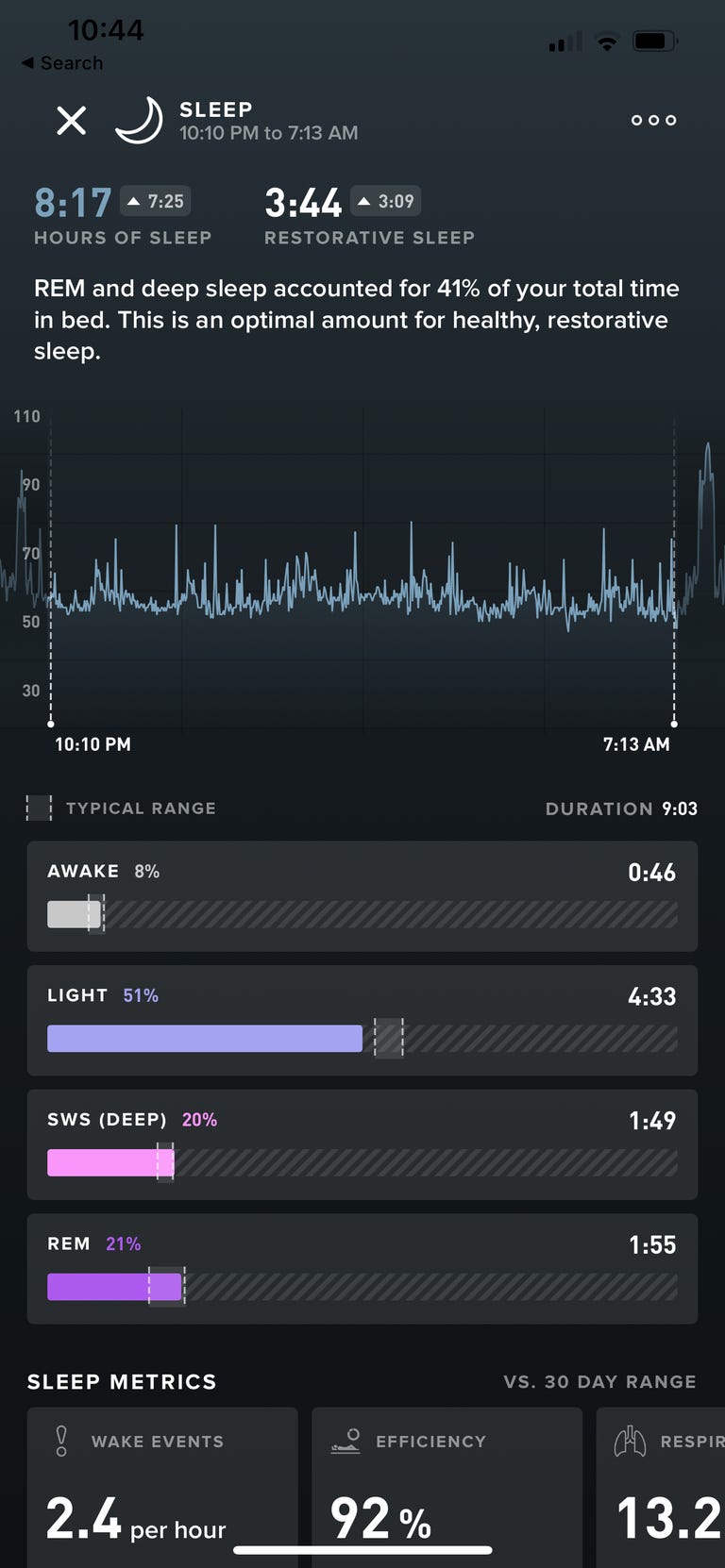
Sleep performance after Day 1 of the experiment.
Day 2: Practice relaxation techniques
- Set aside 10 to 15 minutes before bed for relaxation exercises such as deep breathing, progressive muscle relaxation or meditation.
- Find a quiet space, sit or lie comfortably and focus on relaxing your body and mind.
- Gradually release any tension or stress, allowing yourself to unwind fully.
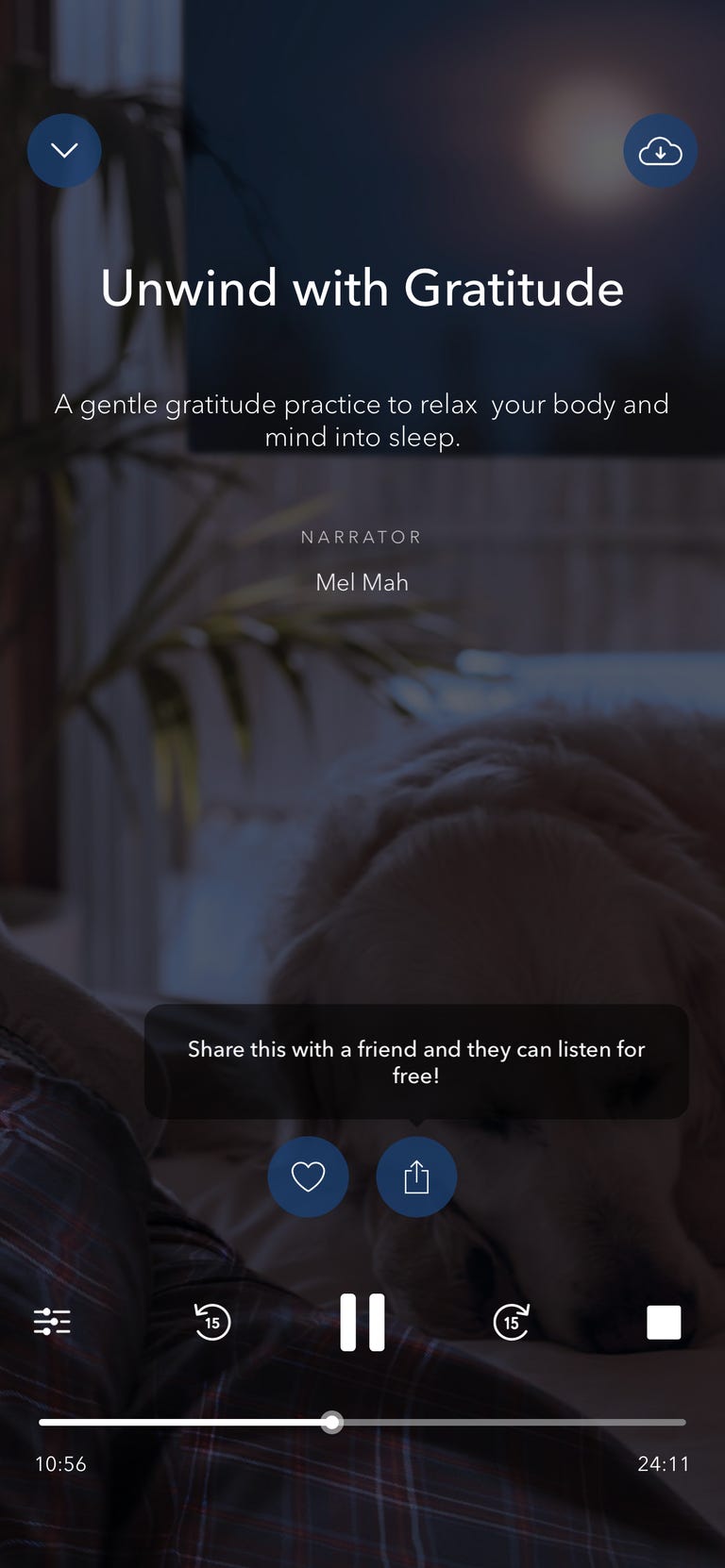
Again, I dimmed the lights in my room and set a bedtime to get at least 8 hours of sleep. The only thing I switched up this time was doing a sleep meditation instead of reading.
The Calm app has been my go-to for meditation for the past two years. Gratitude meditations help me reach a happy and calm state of mind, so I went with the Unwind with Gratitude meditation by Mel Mah. Again, I fell asleep halfway through and didn’t wake up until the next day. I usually meditate first thing in the morning, but after seeing how quickly I drifted off last night, I’ll be making it part of my night routine.
The next morning
I slept for 8 hours and 25 minutes. Even though I got more sleep, I spent less time in deep and REM sleep (33%) than the night before (36%). I saw a positive shift in my wake events (the number of times I woke up during the night); it decreased to 1.8 per hour, compared with 2.4 the night before.

Sleep performance after Day 2 of the experiment.
Day 3: Create a sleep-inducing environment
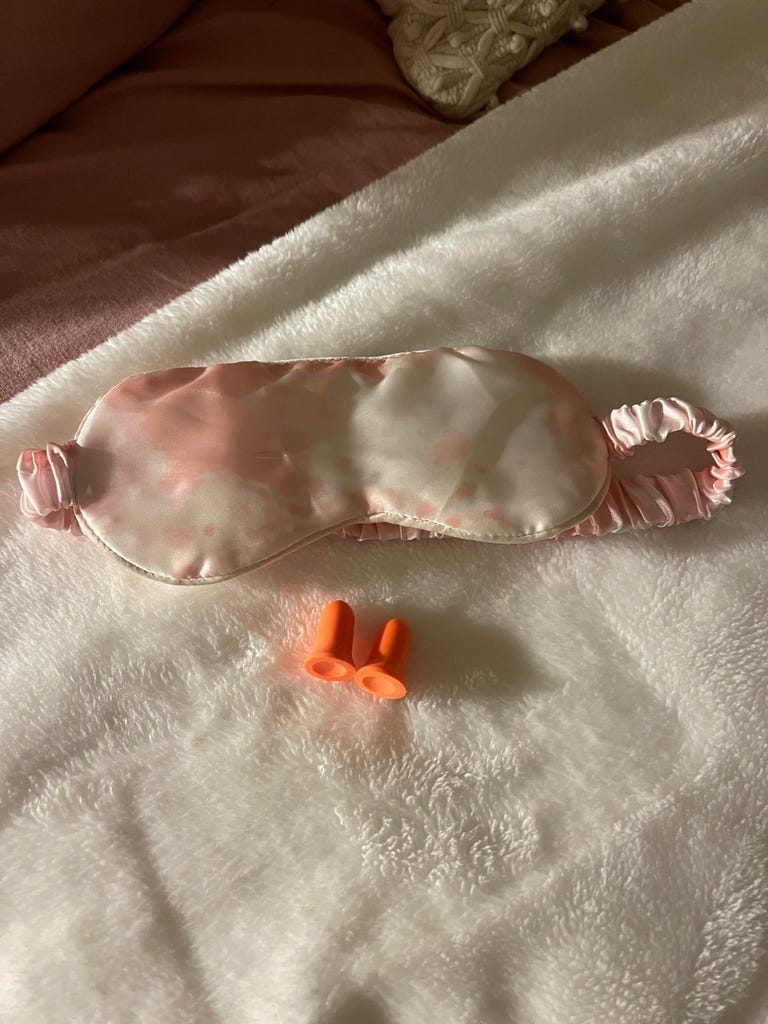
To follow the recommendations, I set my air conditioning to 68 degrees Fahrenheit and used breathable linen bedding, earplugs and an eye mask. Going overboard with gear impeded me from getting the best restful sleep. I woke up several times during the night because my earplugs kept falling out and my eye mask put too much pressure on my eyes. I recommend investing in good earplugs and a high-quality eye mask to avoid those issues.
Read more: How to Create the Perfect Environment for Better Sleep
The next morning
Unlike the previous nights, I didn’t get the best rest with these recommendations. I had more wake events and less restorative sleep (a full 30 minutes less) and felt it the next morning (grogginess and fatigue). My lack of sleep had less to do with the recommendations from ChatGPT than my selection of earplugs and eye masks.
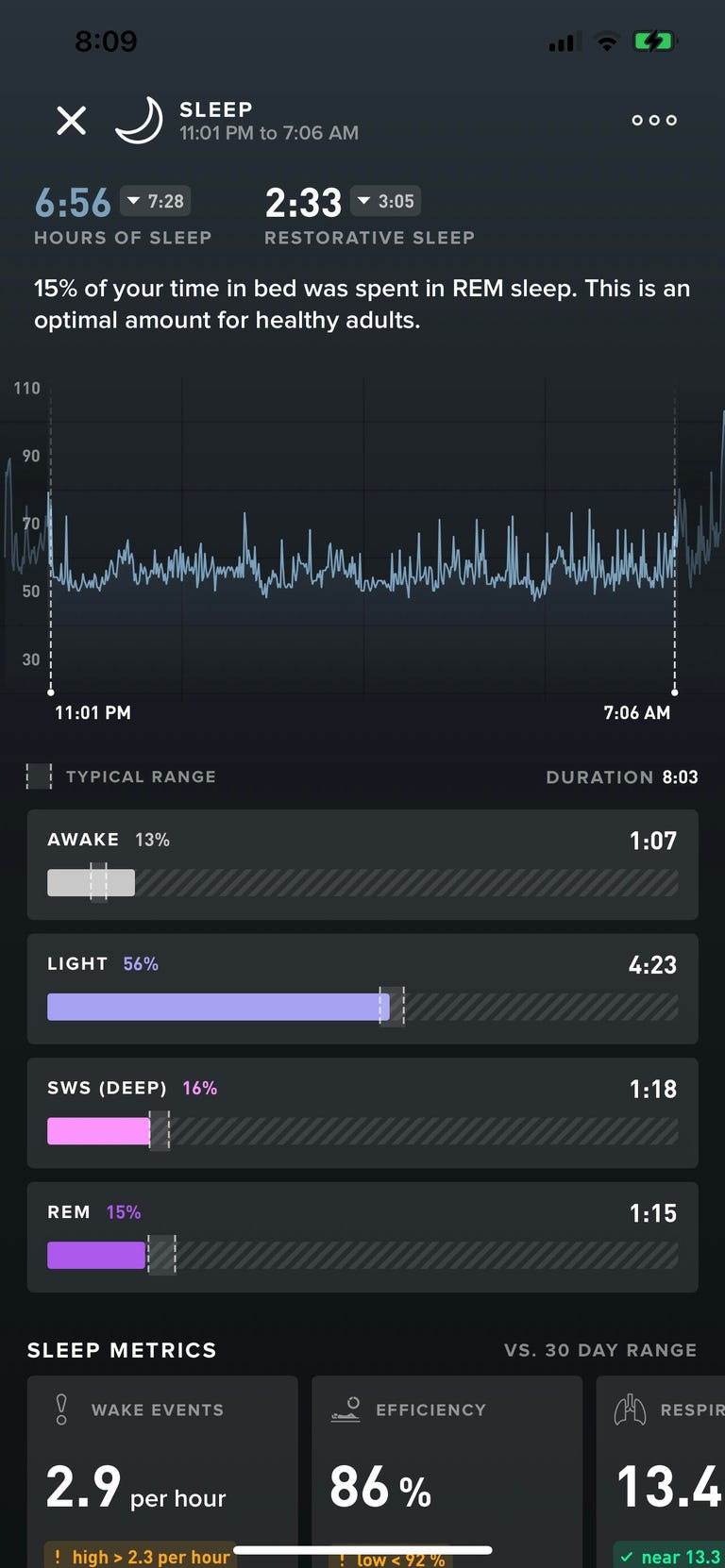
Sleep performance after Day 3 of the experiment.
Day 4: Limit stimulants and establish a bedtime routine
- Avoid consuming caffeine or nicotine in the evening, as they can interfere with sleep.
- Establish a consistent pre-sleep routine that signals to your body it’s time to wind down (such as brushing your teeth, changing into comfortable sleepwear, etc.).
- Follow the routine every night to condition your body and mind for sleep.
I decided to forgo my 3 p.m. cup of coffee for this experiment. It was also a Saturday, so I knew I wouldn’t be going to bed early — and that’s exactly what happened. I watched TV until midnight, affecting my sleep quality, as shown below.
The next morning
Needless to say, I woke up cranky and with a severe headache because I didn’t get enough sleep. I got 5 hours and 25 minutes of sleep and only 1 hour and 41 minutes of restorative sleep. When observing my sleep data, I noticed a direct correlation between the amount of sleep I got and the amount of time I spent in deep sleep. My REM and deep sleep accounted for 26% of the time I spent asleep, significantly less than the average 31% to 35% I typically get.
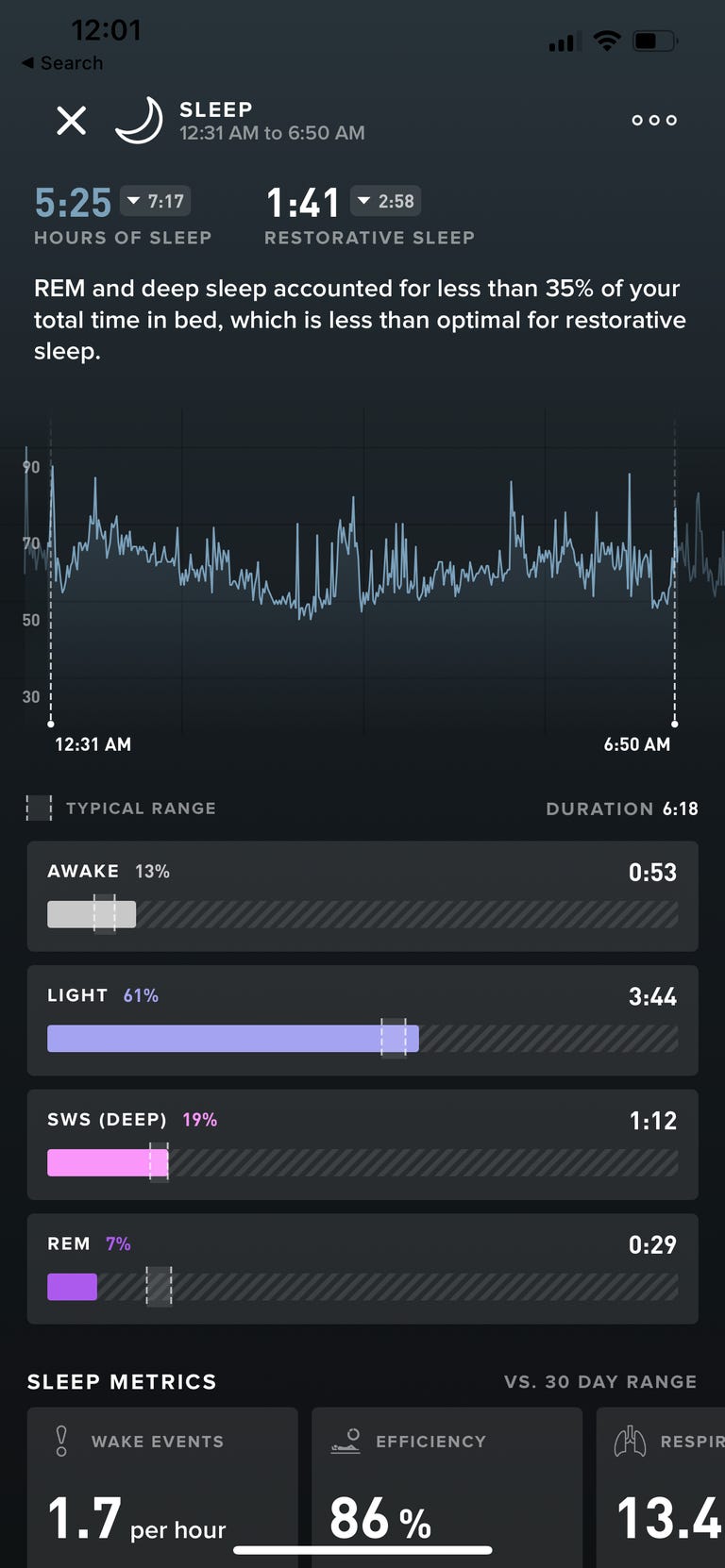
Sleep performance after Day 4 of the experiment.
Day 5: Incorporate physical activity
- Engage in regular exercise earlier in the day, preferably at least a few hours before bedtime.
- Avoid intense exercise close to bedtime, as it may make it harder to fall asleep.

Taking a 30-minute stroll through the park in Puerto Rico.
For physical activity, I decided to go on a 30-minute walk in the park since Sundays are my rest day from workouts. Since the recommendations for days one and two worked for me, I went to sleep earlier and read for 20 minutes before sleep. Although I fell asleep shortly after, I did wake up in the middle of the night and found it hard to get back to sleep.
The next day
Sleep time increased to almost 2 hours more than the night before, and I spent 39% in deep and REM sleep, but my wake time considerably spiked (from 1.7 to 2.2 per hour). This left me tired in the morning, minus the headache from the previous day.
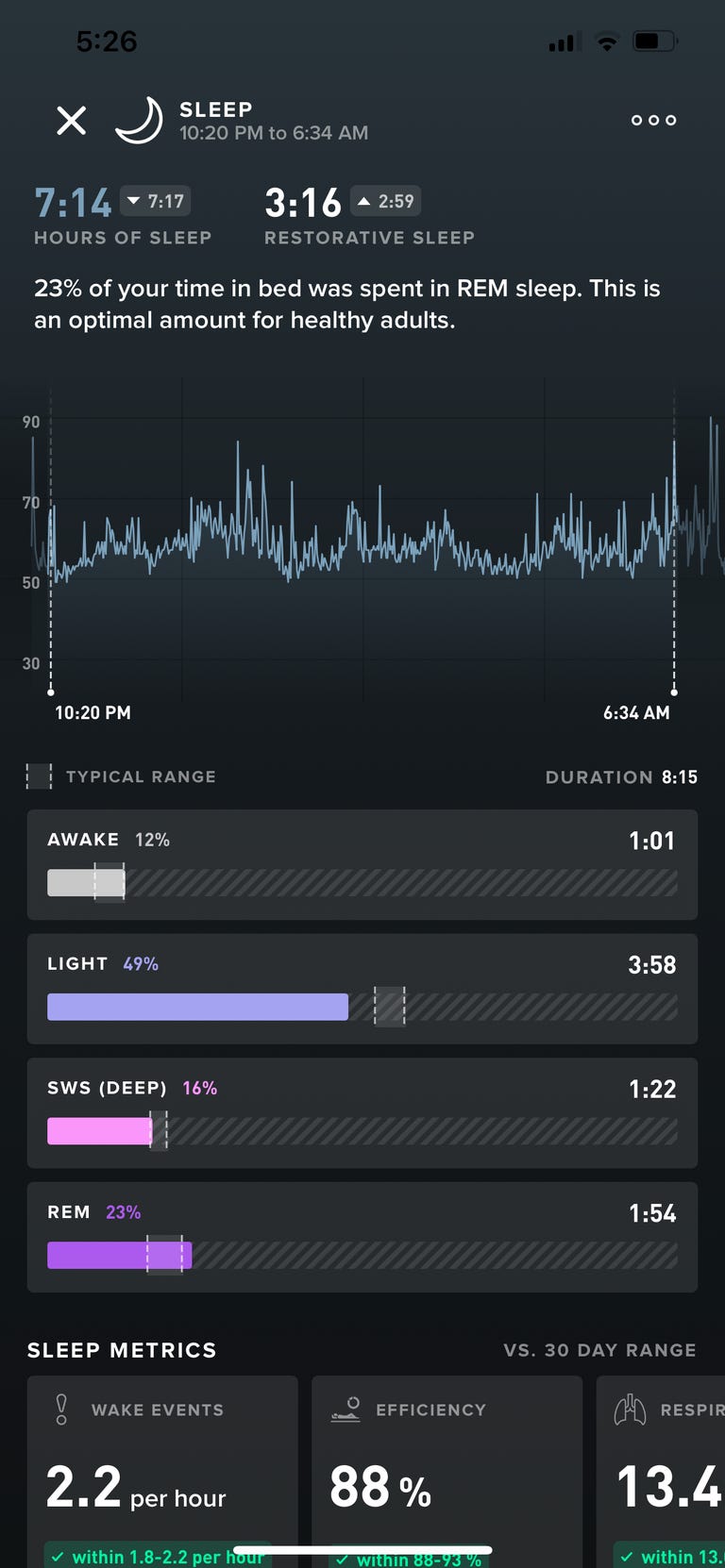
Sleep performance after Day 5 of the experiment.
Day 6: Avoid late-night eating and drinking
- Finish your dinner at least 2 to 3 hours before bedtime.
- Avoid greasy or spicy meals close to bedtime, as they can cause discomfort and disrupt sleep.
- Limit fluid intake before bed to avoid disruptive trips to the bathroom during the night.

Dinner for Day 6: ramen, breaded tofu and avocado.
I found a few studies that link spicy, greasy and sugary foods to disrupted sleep, as they can cause acid reflux and worsen heartburn symptoms. Regarding fluid intake, the Cleveland Clinic recommends you stop drinking water at least 2 hours before going to bed.
Having dinner earlier was a struggle since I usually eat around 8:30 p.m., but I started making dinner early and was ready to eat by 7 p.m. I also made sure to avoid spicy foods and excessive oil.
The next morning
While I did get to bed earlier, I spent more time in light sleep (60% compared with 41% the night before) and significantly less time in REM sleep (12%, as opposed to 23% the night before). This also resulted in less restorative sleep (2 hours and 36 minutes, compared with 3 hours and 16 minutes the night before).
I felt rested but still didn’t get enough sleep. This leads me to believe that my diet impacts my sleep less than stress and anxiety, as I’ve found engaging in relaxing activities right before bed helps me sleep better than avoiding spicy foods.
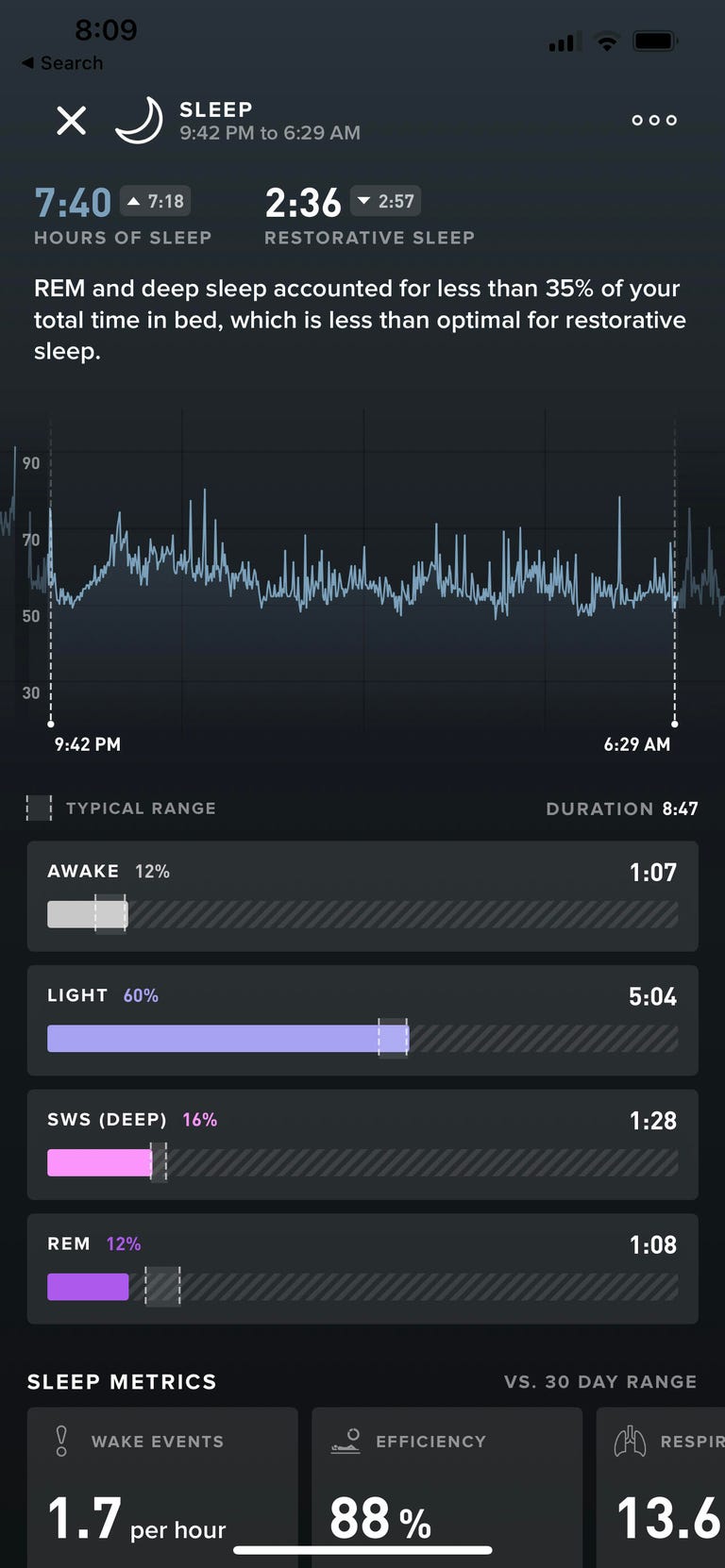
Sleep performance after Day 6 of the experiment.
Day 7: Wind down with a relaxing bedtime routine
- Start your routine 30 to 60 minutes before your desired bedtime.
- Engage in relaxing activities like gentle stretching, journaling or listening to calming music.
- Create a cozy atmosphere in your bedroom by dimming the lights and minimizing distractions.
- Practice good sleep hygiene by maintaining a consistent sleep schedule.
The recommendations for the final night were similar to the first. This one worked best for me out of all the routines, so I was excited to try it out again. Thirty minutes before going to bed, I turned off all electronics, dimmed the lights in my room and read my book. Again, I didn’t hit the 30-minute mark before my eyes started to close.
The next morning
Similar to after the first night, I woke up well-rested and energized. I got 8 hours of total sleep with 2 hours and 34 minutes of restorative sleep. I spent 27% of my time in deep and REM sleep, but when I look at the breakdown, I spent less time in deep sleep and more time in REM sleep than the night before. I also had significantly more wake events during the night.
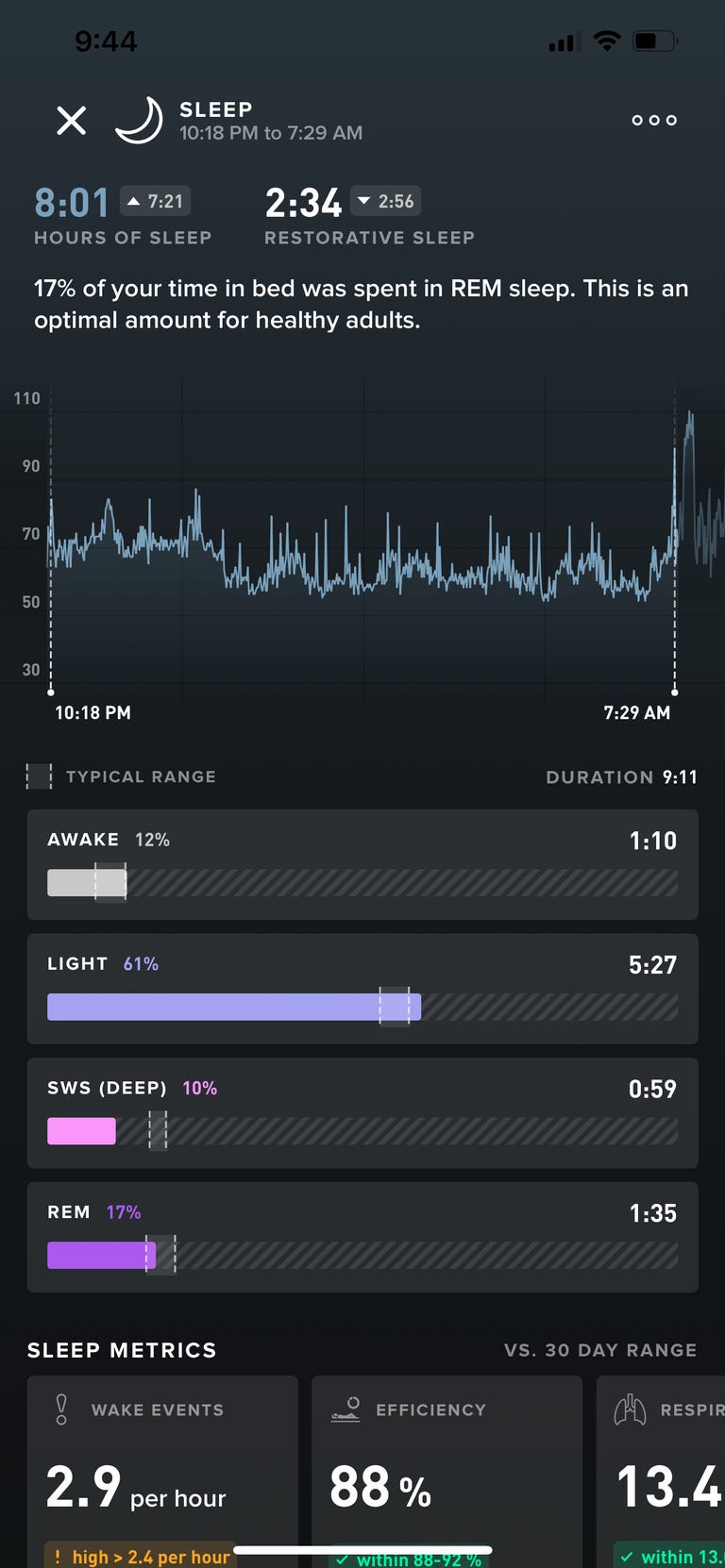
Sleep performance after Day 7 of the experiment.
Verdict
My sleep performance didn’t change after following ChatGPT’s recommendations for a week. I started with 91% and ended with 91%. That’s not to say using AI to achieve better sleep isn’t an effective strategy; it just means I didn’t find changing my routine every day to be helpful.
I did find some habits that helped me get better sleep and I plan to incorporate those into my nightly routine. Dimming the lights, turning off electronics and reading before bed were great suggestions that worked for me.

Average daily sleep performance for the week of the experiment.
Would I recommend you use AI to get better sleep?
The short answer is yes — to an extent. By leveraging the data provided by Whoop, I gained valuable insights into my sleep patterns and found which sleep routine works best for me.
ChatGPT can help you improve your sleep quality by suggesting different routines to help you find the one that best suits you. Keep in mind that ChatGPT’s automated technology spots patterns found in oceans of data from the internet and other sources, so what it recommends might not be too different from what you can find with a Google search.
Artificial intelligence will continue to evolve. I see a future where AI will become sophisticated enough to give even more personalized recommendations that help us better optimize our sleep — hopefully leading to a more rested and happier world.
Editors’ note: CNET is using an AI engine to help create some stories. For more, see this post.


